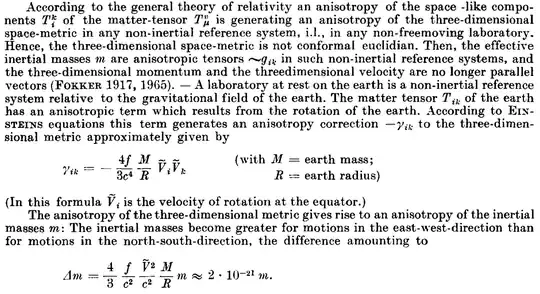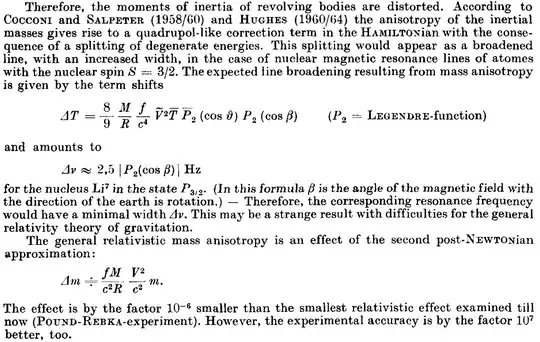The paper contains the following English abstract:


The paper seems to be about the interpretation of certain coordinate expressions within Einstein's relativity, specifically it's description within the post-Newtonian expansion.
I believe that the modern way of describing the point of the article is that our lab systems on Earth are not inertial, and we use local coordinates that are not isotropic even at leading order. These would be known as Fermi (normal) coordinates. As such, we observe an anisotropic geometry even at leading order in such frames. Additionally, Treder discusses another source of anisotropy, which is the rotation of the Earth. This is a very subtle effect that appears at second post-Newtonian order in the Lorenz coordinate gauge. Most importantly, it does not appear in the local set of lab coordinates, it only appears in a global coordinate frame. In other words, the anisotropy appearing due to Earth's rotation can be transformed away locally and should not concern you too much in a lab.
So far this is seems to be generally in lines with the current narrative in General relativity. However, what Treder seems to argue next is that experimentally these anisotropies in the spatial metric would be interpreted as an "induced" anisotropy of the mass of the test particles in this field. In particular, he argues that this could lead to the splitting of energies such as in the nuclear resonance experiments by Hughes et al. (1960, Upper Limit for the Anisotropy of Inertial Mass from Nuclear Resonance Experiments, DOI:10.1103/PhysRevLett.4.342).
However, Treder's argument is in conflict with how GR actually works. There, local physics occur in local inertial frames (Riemann normal coordinates), where the metric tensor is isotropic. Any effect of acceleration occurs due to the physical forcing effects causing the acceleration (such as an electromagnetic trap that stops your sample from freely falling towards the center of the Earth), which of course needs to be taken into account in precision experiments. However, we would certainly not speak of these as "mass anisotropy", we would typically characterize them as "non-inertial/external force effects". The 1960 nuclear resonance experiments by Hughes et al. were designed to detect anisotropy that would appear even in the local inertial frame. Treder argues that we should see these experiments yield non-zero results because of the aforementioned anisotropies in the non-inertial lab frame/global coordinates. I believe this argument to be simply wrong.

